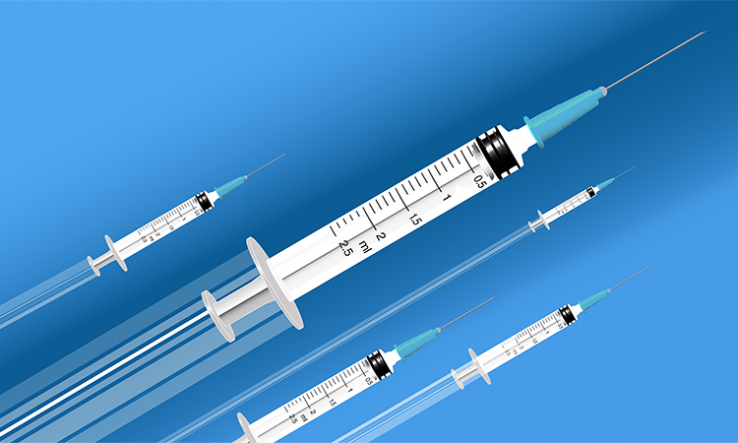
Government officials say vaccine manufacturing centres could produce 70 million doses within six months
Vaccine-manufacturing centres under construction in the UK will ensure the country has sufficient capability and capacity for future vaccination programmes, government officials have said.
The news comes as the government unveiled a UK Covid-19 vaccine delivery plan, which describes how the government aims to deliver two million vaccinations per week at over 2,700 vaccine sites.
“The UK vaccines delivery plan is a culmination of all our hard work so far, and sets some very promising and challenging ambitions for the next few months,” said minister for Covid-19 vaccine deployment, Nadhim Zahawi.
The Association of the British Pharmaceutical Industry welcomed the plan.
“That scientists have delivered vaccines against Covid-19 in under a year is a massive achievement,” said Richard Torbett, chief executive of the ABPI. “Vaccinating mass populations against the coronavirus in the UK and around the world is also a significant challenge and we need to remain focussed.”
But beyond the plan for immediate weeks and months, others are looking at what capacity there is for continued manufacture and delivery of vaccines for Covid-19 and other diseases beyond this year.
The UK government has invested money in building vaccine facilities after criticisms early last year that there was no capability to make large number of vaccines domestically.
This includes a £100 million investment in a Cell and Gene Therapy Catapult Manufacturing Innovation Centre (CGMIC) in Braintree Essex, which is set to open in December 2021, and £93m into Vaccines Manufacturing Innovation Centre (VMIC), which is under construction in Oxfordshire and also expected to be completed this year.
Speaking in a House of Commons Public Accounts Committee hearing on Covid-19 vaccines, Sarah Munby, permanent secretary at the Department for Business, Energy and Industrial Strategy, said each centre, once completed, would have the capability to produce up to 70 million doses within six months.
“That is sufficient manufacturing capacity to manufacture all of the vaccines we might need in a year if we had to do that. So we’ve got full contingency manufacturing capacity within UK HMG-owned facilities,” she told MPs.
“As it happens, we are not currently using that capacity. It’s not on stream yet and most of the manufacturing is being done entirely through the auspices of the people that we’ve contracted with, and that’s fine too.
“But as we look ahead to those uncertainties about mutation, about annual vaccination and so on, having built up that capability for the UK to be confident that we can do our own manufacturing if we need to, is a really important legacy of this work.”
Kate Bingham, former chair of the UK Vaccines Taskforce, added that both centres had “flexible bioprocessing capabilities that allow us to manufacture different kinds of format so we can manufacture viral-based vectors, mRNA vaccines, protein adjuvant vaccines, as well as antibodies”.
“Will they need to be updated in due course as formats develop? Of course,” she said, “but we will have state-of-the-art manufacturing once VMIC and CGMIC are up and running. That will provide the capability that we need to manufacture vaccines in the UK.”
UK Vaccine Taskforce
Asked if the UK Vaccine Taskforce, which was set up to procure vaccines, had become a “standing part of government”, Munby said the group was working “at absolutely full pelt and we’ve got no plans to change that”.
“Clearly, if in due course it became obvious that this problem had become much more straightforward then you could find a different solution, you would certainly scale it down,” she said.
“But I think this comes back to the uncertainty about what the future vaccine programme will look like, depending on progress of both the virus and the technology.”
Elsewhere, Bingham praised the UK’s response to the pandemic, telling MPs: “We are the only western country in the world to show that we can take academic science and turn that into a commercially industrial consistent approved vaccine.
“To go from academic [research] to [vaccine] launch in less than a year is absolutely phenomenal.”